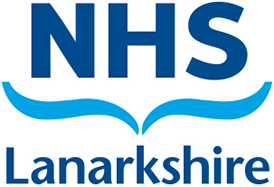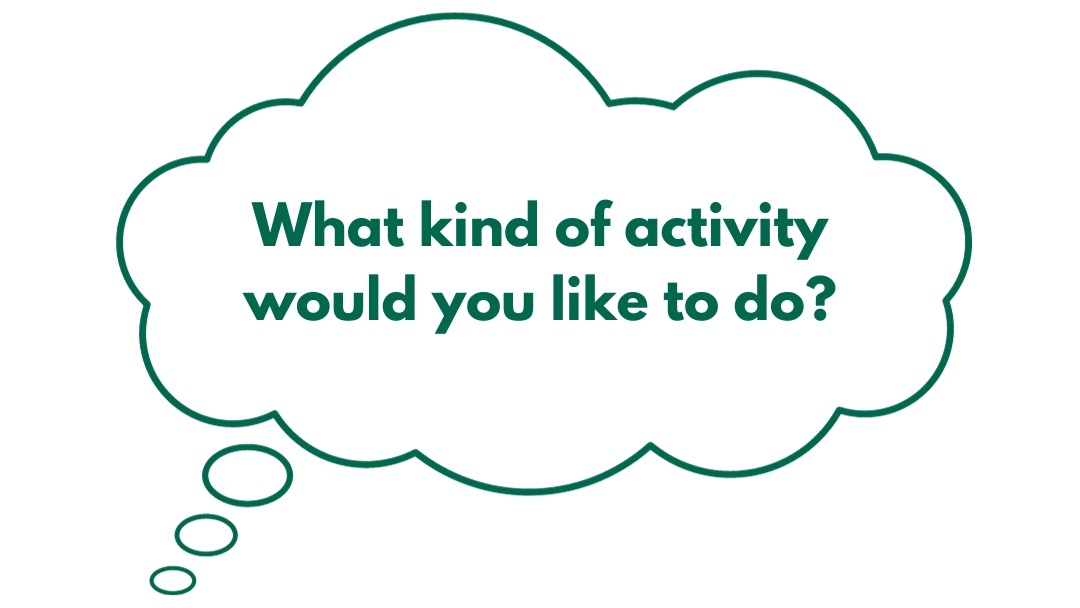Promoting Healthy Living
Section one: Introduction and module aims
Introduction
I’m a physiotherapist, and welcome to module 7: promoting healthy living. A brain injury can cause problems with physical activities like walking and balance because of weakness in your muscles, changes in your sensation and stiffness. Most people will have problems with their movement after a brain injury. This will affect the amount and level of activity you can do, as well as taking part in the activities that you love and enjoy.
Here, we will look at some of the physical difficulties you might have after your brain injury that might affect the activities you do. Hopefully this information will give you some ideas on how you can still do the things you enjoy.
What is Physical Activity?
Physical Activity is body movement that works your muscles. You need more energy to move than you do when you are resting. There are so many different types of exercise, which all have different benefits to our bodies. For example, cardiovascular exercise makes our heart stronger, whilst exercising with weights makes our muscles grow. Some examples are below:
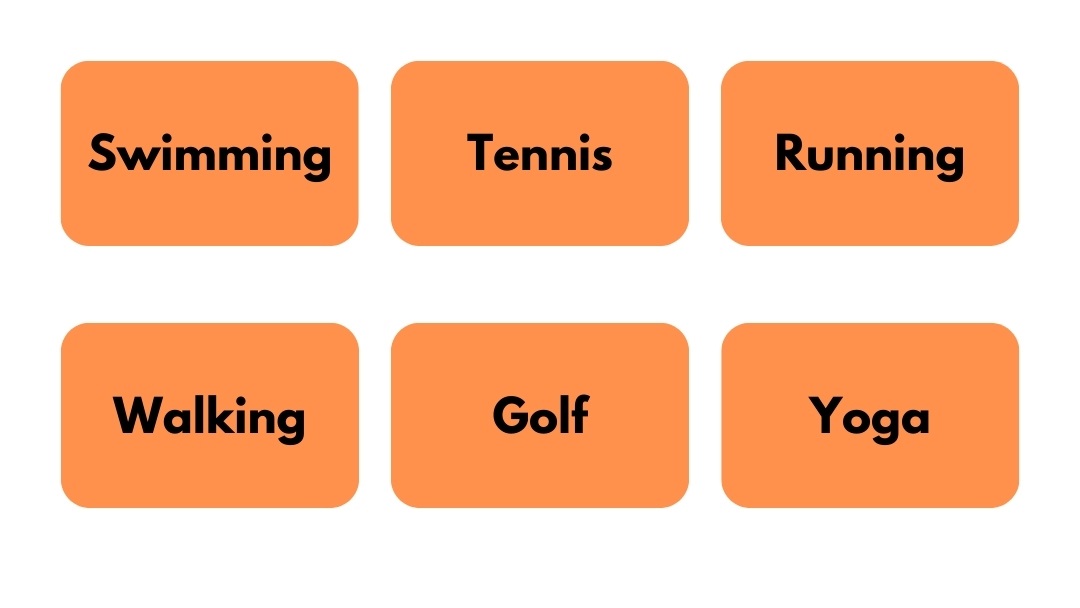
Exercise lowers your blood pressure, improves your mood, and can improve your brain function. This helps you to think more clearly, have a better understanding of information, and even walk better. This can help you to do everyday tasks such as washing, dressing and showering.
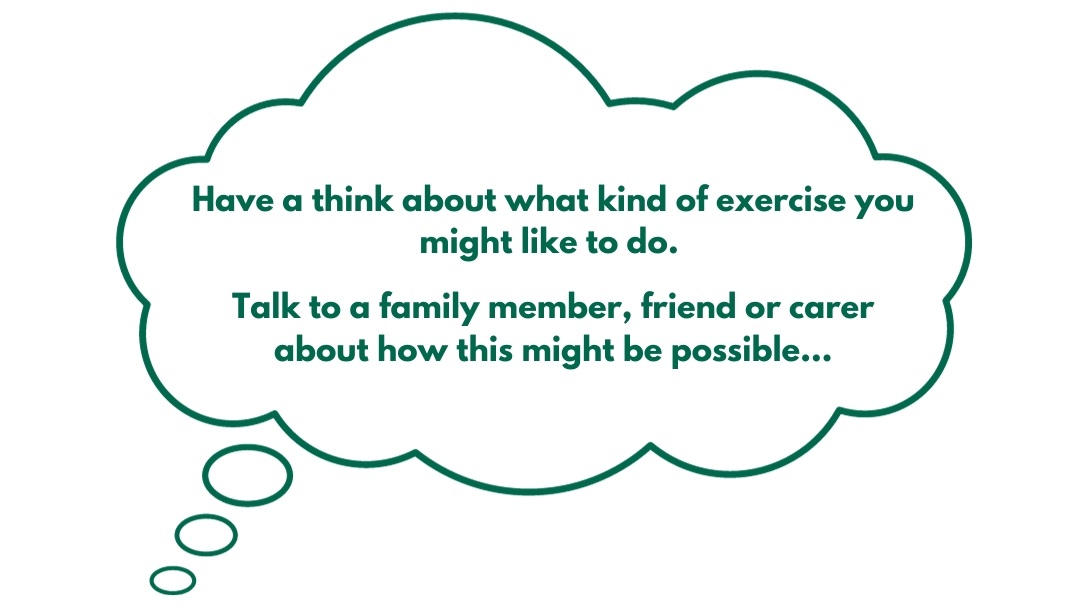
If you want some more information on the different types and benefits of exercise, you can do so here: Exercise – NHS (www.nhs.uk)
Section two: How can my brain injury affect my exercise?
Changes to your body
Your body changes in lots of different ways after a brain injury. Changes to the way your body moves or feels is described as physical changes. We are going to talk about just a few common physical changes that may be experienced following a brain injury.
Mobility and walking
- Changes to your walking such as dragging your legs, ‘catching’ your foot, or slower walking.
Balance
- Finding it hard to stay balanced or feeling like you are going to fall.
Co-ordination
- A ‘jerking’ movement when you are walking, or reaching.
Movement of muscles and joints
- Stiffness in your joints and muscles that makes some movements tricky or impossible.
Fatigue
- Feeling so tired that tasks such as getting dressed feel impossible, see our coping with fatigue module to learn more.
Sensory change
- Changes to the feeling of certain areas of your body such as your arm or leg.
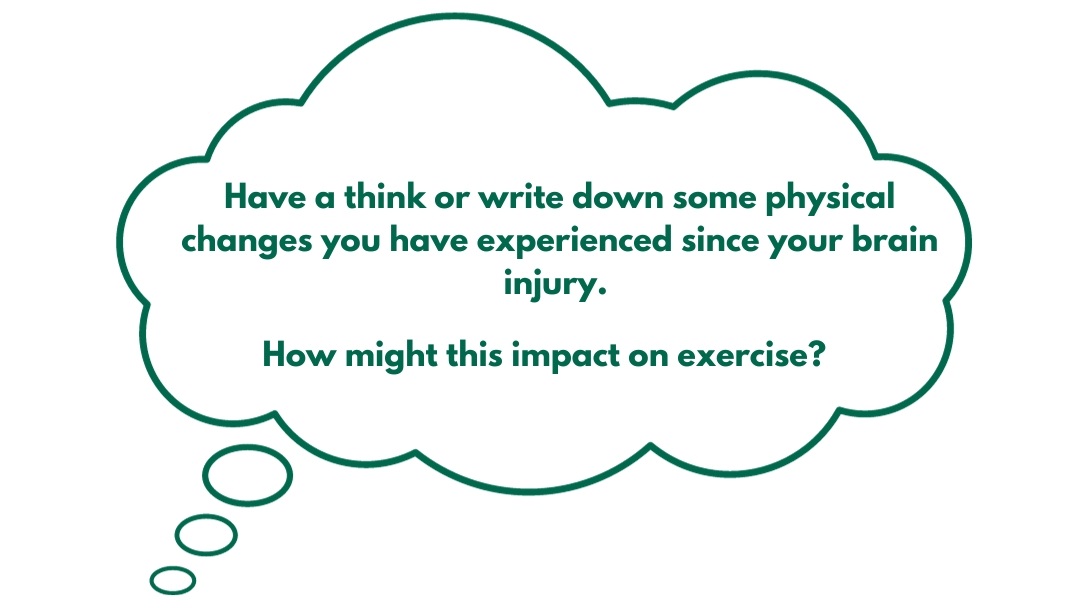
Section three: What can I do to help?
Moving more and doing more exercise can really help your wellbeing – it doesn’t matter if your brain injury was recent or many years ago. If you’re not sure which activities are safe for you, speak to a healthcare professional for advice.
Almost anyone can find a way to add movement into their daily life, whether it’s at home, outdoors or at a gym. Whatever you’re able to do, try increasing the amount of activity you do – even a small amount extra will make a difference.
If you feel ready, you could try looking at some structured exercise. Have a think about:

What would you enjoy doing?
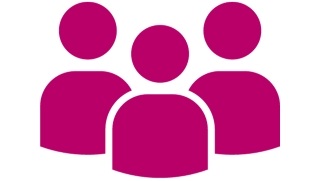
Would you prefer to do something by yourself or in a group?

What are your goals, and what are the small steps to achieve these?
For most people, doing some form of exercise is still possible even after physical changes. Here are some ideas:
Being physically active at home
- An exercise programme at home, for example https://www.nhsinform.scot/healthy-living/preventing-falls/keeping-well/strength-and-balance-exercises
- Following online exercise classes such as:
- General household activities
- Cooking
- Housework
Being Physically Active Outdoors
- Gardening
- Walking (https://www.gojauntly.com)
- Jogging (NHS Couch to 5K)
- Cycling
- Hill walking
Being physically active in the community
- Using your local gym – North Lanarkshire Leisure & South Lanarkshire Leisure and Culture
- Exercise classes such as:
- Yoga
- Pilates
- Seated Zumba
- Tai Chi
- A specialist rehabilitation class (ask a healthcare professional for more information)
- Bowling
- Golf
- Swimming
- Dancing
These are just some examples of activities that you could do. It’s important to choose something that you enjoy doing.
Section four: How to keep going with your activity
Start slowly and build up
- Don’t do too much too soon.
- Start slowly and set small, achievable goals.
- Remember to plan in time to rest.
Do something that you enjoy
- This makes it more likely that you’ll have the motivation to keep doing it!
- You could try different things until you find something that you like.
Make a plan
- A weekly planner or daily diary can help set time aside to do your chosen activity.
Get support
- From friends or family
- You might find a group activity is helpful
- Meeting other people who have had a brain injury may be beneficial to you – find a local or online support group
- Posting your activity on social media, or as part of an app might be useful to you.

Remember, it’s not too late to start physical activity. And if you have found that you have stopped exercising, have another go!
Resources
Local leisure facilities:
- North Lanarkshire Leisure: https://www.activenl.co.uk
- South Lanarkshire Leisure: https://www.slleisureandculture.co.uk
